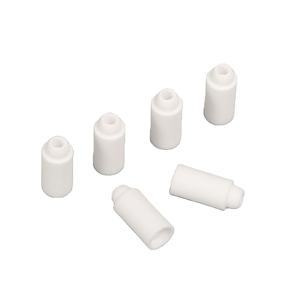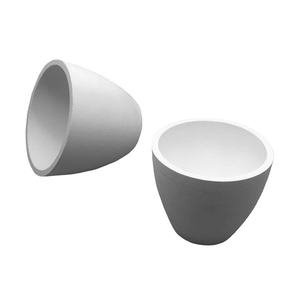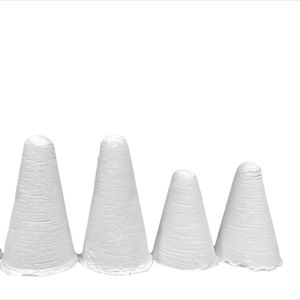Professional industry ceramic supplier, silicon nitride, silicon carbide, aluminum nitride and any other kinds of ceramics.
PRODUCT PARAMETERS
Description
Overview of Supply Insulation Cotton Refractory Materials Refractory Ceramic Fiber Module
Supply Insulation Cotton Refractory Materials Refractory Ceramic Fiber Module are non-metallic substances designed to withstand extreme temperatures exceeding 1,000°C, along with harsh chemical and physical stresses. They are essential for the inner linings of industrial furnaces, kilns, reactors, and incinerators, providing critical thermal insulation and structural integrity in processes ranging from metal and glass manufacturing to power generation.
Features of Supply Insulation Cotton Refractory Materials Refractory Ceramic Fiber Module
-
High-Temperature Resistance: Maintain structural strength and stability at temperatures often exceeding 1500°C.
-
Excellent Thermal Shock Resistance: Withstand rapid heating and cooling cycles without cracking or spalling.
-
Chemical Inertness: Resist corrosion and degradation from slags, molten metals, and acidic or basic environments.
-
High Mechanical Strength: Possess considerable load-bearing capacity at operating temperatures.
-
Low Thermal Conductivity: Provide effective insulation to improve energy efficiency and protect furnace structures.
-
Abrasion Resistance: Withstand erosion from solid materials and gas flows.
Specification of Supply Insulation Cotton Refractory Materials Refractory Ceramic Fiber Module
Supply Insulation Cotton Refractory Materials Refractory Ceramic Fiber Modules are pre-assembled blocks. They are made from spun ceramic fiber. This fiber is alumina-silica based. These modules insulate industrial furnaces and kilns extremely well. They handle very high temperatures. Maximum continuous use reaches 1427°C (2600°F). The material resists thermal shock perfectly. It doesn’t crack under rapid temperature changes.
The modules are lightweight. This reduces stress on furnace structures. Installation is fast and simple. Workers fold and compress the modules. They insert them into anchor systems on hot furnace walls. The modules expand after installation. This creates a tight, seamless layer. Heat loss drops significantly. Energy savings are substantial. Operating costs go down.
Different grades exist. Common types use high purity alumina-silicate fiber. Higher alumina grades resist even more heat. They also handle corrosive atmospheres better. The fiber is clean. It contains very little shot or binder. This improves insulation performance. It also extends module life.
These modules are durable. They withstand furnace vibrations and chemical exposure well. They provide excellent insulation with minimal thickness. Furnace internal space stays larger. Production capacity often increases. Maintenance needs decrease. The modules last a long time. They are a reliable, high-performance insulation solution for demanding applications.
Applications of Supply Insulation Cotton Refractory Materials Refractory Ceramic Fiber Module
Industrial equipment loses heat. This wastes energy. Workers need better insulation. Refractory ceramic fiber modules help. They handle very high temperatures. Think furnaces or boilers. Heat escapes easily without good insulation. These modules block heat transfer. They keep heat inside the equipment. This saves energy. Lower fuel costs result.
Installation is straightforward. Workers compress the modules. They fit them into the lining. Workers release the compression. The modules expand. They lock tightly together. This creates a seamless layer. No gaps mean better insulation. It also means faster installation. Workers spend less time. Downtime reduces.
The material itself is tough. It resists chemical attack. Hot gases inside furnaces won’t damage it. It handles thermal shock well. Rapid temperature changes occur. The material won’t crack easily. This extends the equipment’s life. Maintenance needs decrease. Repairs happen less often.
Common applications exist. Steel plants use these modules. Heat treatment furnaces need them. Petrochemical heaters rely on them. Power generation boilers benefit. Any place needing high heat containment considers them. The modules offer consistent performance. They maintain high insulation value. Energy efficiency improves significantly.
Company Profile
Tanki New Materials Co.Ltd. focus on the research and development, production and sales of ceramic products, serving the electronics, ceramics, chemical and other industries. Since its establishment in 2015, the company has been committed to providing customers with the best products and services, and has become a leader in the industry through continuous technological innovation and strict quality management.
Our products includes but not limited to Aerogel, Aluminum Nitride, Aluminum Oxide, Boron Carbide, Boron Nitride, Ceramic Crucible, Ceramic Fiber, Quartz Product, Refractory Material, Silicon Carbide, Silicon Nitride, ect. please feel free to contact us.

Payment Methods
T/T, Western Union, Paypal, Credit Card etc.
Shipment Methods
By air, by sea, by express, as customers request.
5 FAQs of Supply Insulation Cotton Refractory Materials Refractory Ceramic Fiber Module
What are Refractory Ceramic Fiber Modules?
These are pre-assembled insulation units. They use high-temperature ceramic fiber blankets compressed into folding patterns. The modules include anchors for quick furnace lining installation. They save significant time compared to traditional brick or castable linings.
How hot can these modules handle?
The maximum temperature depends on the fiber type. Standard modules often handle 1260°C (2300°F). Higher purity grades can withstand temperatures up to 1430°C (2600°F). Always check the specific product datasheet for exact limits. Exceeding the temperature rating damages the material.
Why choose modules over loose fiber or blanket?
Installation is much faster. Workers simply unfold the modules and secure them with the built-in anchors. This creates a uniform lining layer quickly. The folded design minimizes heat loss through joints. It also reduces the risk of installation errors common with loose materials.
Do they save energy?
Yes. These modules offer excellent thermal insulation properties. They prevent furnace heat from escaping. This lowers the energy needed to maintain operating temperatures. Reduced energy consumption means lower operating costs over time. The insulation efficiency pays back the initial investment.
How long do they last?
Lifespan varies based on furnace conditions. Factors include temperature, atmosphere, and mechanical wear. Generally, modules last longer than many traditional refractories like brick. They resist thermal shock much better. This avoids cracking from rapid heating or cooling cycles. Proper installation and avoiding temperature abuse maximize their service life. Replacement costs are lower due to easier installation.
REQUEST A QUOTE
RELATED PRODUCTS

Zirconium-containing Refractory Ceramic Fiber Thermal Insulation Cotton Thermal Insulation Material in Electric Water Plant

High-Purity Silicon Carbide Powder for Advanced Ceramic and Refractory Applications

High Purity Brown Fused Alumina 95% Min Al2O3 200 Mesh Powder Low Fe2O3 Refractory Ceramic Kiln Furniture Cutting Bulk Supply

Custom Manufacturing Heat Resistant Refractory Ceramic Tiles

Top Grade High Alumina Low Cement Castables Acid & Alkali Resistant Refractory Cement Custom Cutting Processing Service



